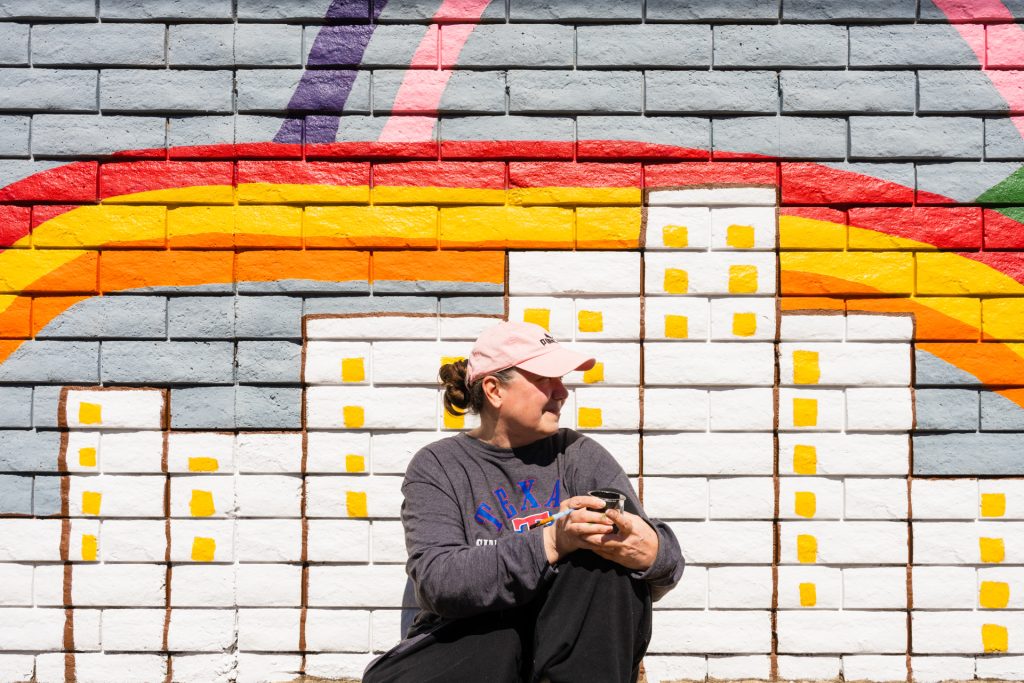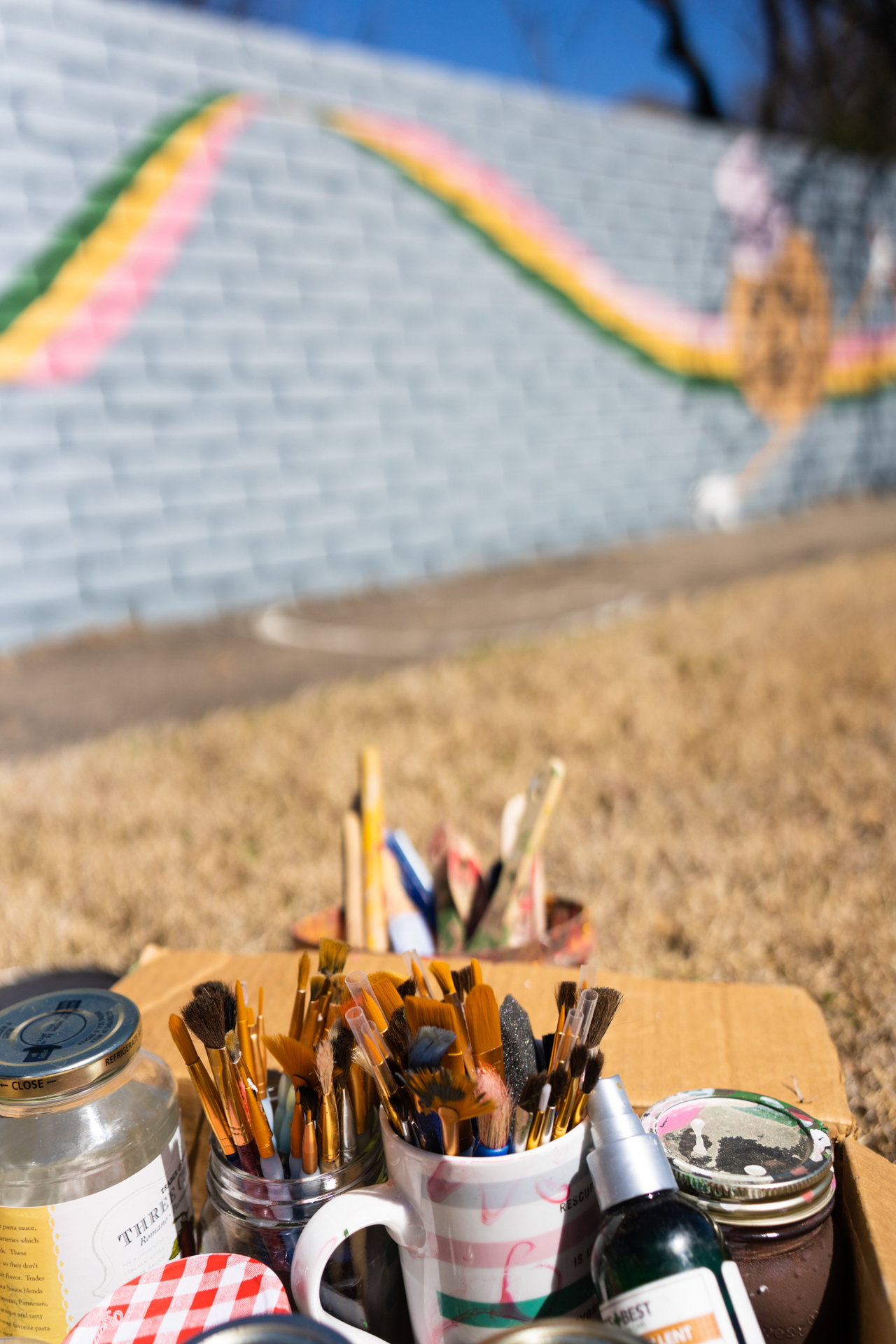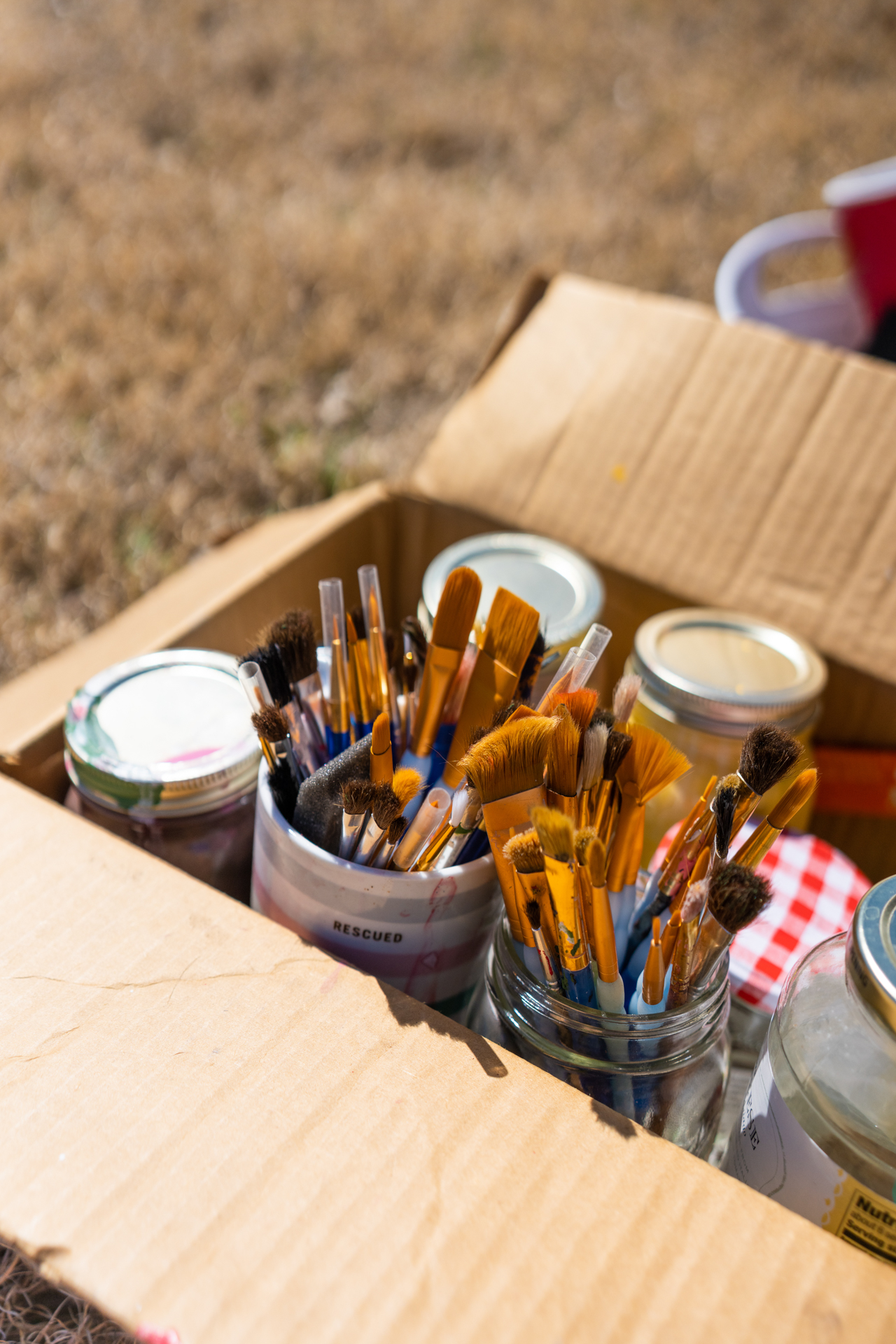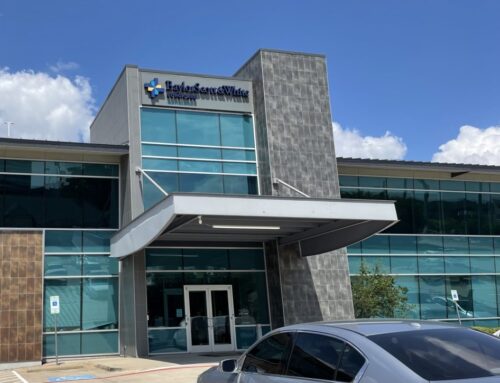
Photography by Corrie Aune.
IN THE 1960S, the road to cruise down was Forest Lane.
Hundreds of people would show up on Friday and Saturday nights to drive the strip, which was separated from a residential neighborhood by a graffiti-plastered brick wall.
W.T. White High School art teacher Mary Beth Neale wanted to do something about it. She went to the City and was granted the proper permits to paint a mural on the wall.
Senior art students from W.T. White’s class of 1976 drew the original graphics that would be painted, among them a sun, an eagle and a car. The drawings were enlarged, projected onto the wall and traced, and the art students told volunteers which colors to use. Phillips rode the bus from W.T. White to the wall every day after school to help paint, along with about 30 other people.
“We had the best time of our life doing something that has been a wonderful exhibit of our time,” she says.
It took between three and four months to finish the 2,000-foot mural, and after nearly 50 years, the paintings can still be seen. But it hasn’t come without countless hours of restoration.
The first major work came in the ’90s when one woman spent years painting the entire mural to bring vibrancy back to the faded colors.
Then in 2011, a car crashed into the wall and left a dent, and someone painted the word “goof” over it.
Brent Herling, who was at W.T. White when the mural was originally done, has been keeping an eye on it for decades. Anytime he notices graffiti — “goof ” included — he removes it. In this case, Herling used SpongeBob Squarepants to cover it up. He intended it to be temporary, but some alumni were upset over it because they thought it took away from the 1976 graphics. Herling removed SpongeBob months after he painted it.
Then in 2014, some homeowners were pushing to paint the whole wall beige. Herling, who lives just a couple blocks west of the wall, wouldn’t stand for it.
“I told them pretty flat out, ‘You’re not going to paint this wall beige. It means too much to people,’” he says.
With neighborhood support, he restored the paintings.
A portion of the wall was damaged in 2015 when a truck ran into it. Herling was ready with paint and volunteers to redo the picture of a cave opening. It’s not just people who were there to see the wall painted in the first place.
Crystal Wilson moved to Dallas almost six years ago. She lives just around the corner from the mural and drives down Forest Lane on her way to the pet store.
“I would see the wall, and I would think, ‘Oh my gosh, I love this wall, but it ’s in really bad shape, ’” she says.
She contacted Herling and did her first restorations of the wall about two years ago. Wilson doesn’t have professional experience as an artist, but her grandmother and aunt did, and making art was something they did when Wilson would visit them.
For the first six or eight months she was working on the mural, she bought paint from Lowe’s and received a discount. But eventually, the store stopped extending the offer, which meant she was paying around $33 per bucket. At one point, she asked neighbors for a donation, and she received about $400. But she says she doesn’t really like asking for money.
Wilson, 58, spends 8-10 hours every weekend working on restoring the mural, and she even used her vacation time during the pandemic to work on it, taking a break from her job in finance at a software company.
Neighbors have warmed up to Wilson taking on the project, but at first, she was receiving some pushback. It subsided when she convinced people — especially the ones who were there in 1976 — that she was focused on keeping the design and colors original, not trying to make any changes.
“Because of the efforts that were done painting the wall to get rid of all the graffiti, it was the first time I’ve ever seen that proved you could use art to get rid of such a nasty thing,” Herling says. “And pretty much, people didn’t mess with it. I t stayed in its beautified state.”








